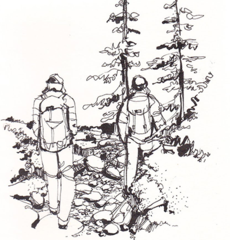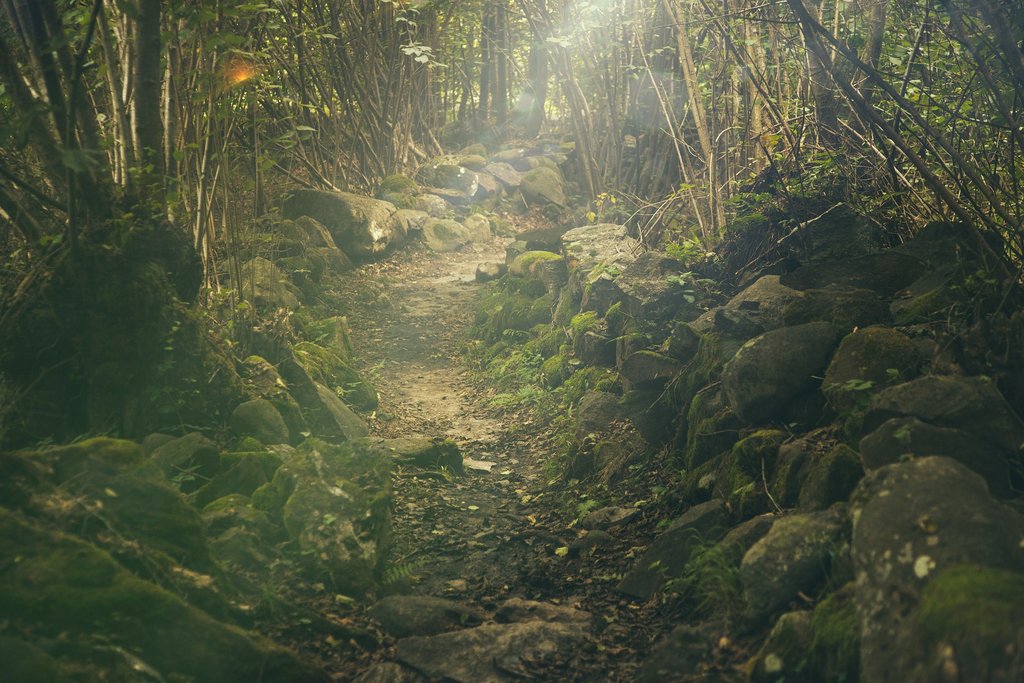How To Travel Following Principles Of Leave No Trace
The amount of backpackers travelling into the wilderness is increasing every year. And more people are travelling in a back-country means that a greater impact is made on the plants and animals living in those environments.
Learning to the practice of Leave No Trace (LNT) backpacking is one of the most important skills any backpacker can learn. Doing it right will minimize your impact on the environment and leave pristine wilderness areas for years to come.
LNT is not really a set of rules they are more of a personal commitment. If you make the choice to travel in the back-country, it is your duty to protect and preserve the natural environment as best as you can.
1. Plan ahead and prepare

Proper preparation and planning will lead to enjoyable trips, where you are able to reach your goals. You will also reduce the risk of unexpected situations arising, which is critical to LNT backpacking. An example of this would be showing up on a trailhead and realizing that there is a campfire ban in effect when you would plant to cook all your meals over an open flame. Now you are left with the choice of either eating cold meals or breaking the rules and possibly setting a devastating forest fire.
Use maps, guide books, and online resources to learn about the area that you will be visiting. Plan a detailed route and learn about current trail conditions so there won’t be any surprised when you get on the trail. Set appropriate goals based on the abilities of your group and the terrain that you will be hiking in. Attempting to cover too many kilometers in difficult terrain is a common error that can lead to unplanned campsites, that can damage the environment.
Travel in small groups whenever possible. Schedule your trips to avoid times of high use. A large group camping in a single location is gonna do more damage to an area because the will be more people, more footsteps, more shelters and you’ll trample more ground. It will be better if you break your group up into smaller sections and camp at separate locations.
Plan your meals properly before your trip. Repackage all your food to minimize waste, reduce your pack weight and make your meals easier to cook. Reducing the number of fires you have by bringing a small stove and cooking one-pot meals, will also reduce the impact on the environment. Plan ahead of time, for how you are going to store your food at night, to keep your food away from animals in the area. Allowing animals to get into your food, will damage their foraging instincts and can be one of the most harmful things that you can do to a wildlife population.
2. Travel and camp on durable surfaces

Even your footsteps are gonna leave a lasting impact on the environment. Travel on trails hard-pack surfaces and minimize the impact. Never cut switchbacks or take off-trail shortcuts. Camp only in established sites. Good campsites are found not made. Never camp in areas that are undergoing restoration. Make sure you arrive at your campsite a few hours before dusk, so you have enough time to select a good campsite. Also, make sure you camp at least 100 meters away from water sources to allow animals an undisturbed path to the water.
If you are traveling in the area with no trails, stick to durable surfaces and minimize your damage by dispersing your impact. Spread your group out so you are not walking in one straight line when you are traveling through undisturbed areas. That will allow the area to recover faster. Avoid trampling softly plants and wetland areas which will be very slow to recover. If there is no other option, minimize your impact by traveling on rocks or hardy vegetation like dry grass.
3. Dispose of waste properly

If you pack it in, pack it out. Little bits of trash adds up quickly and will take a lot longer to decompose than you might think. Even organic waste like apple cores and orange peels will take months or even years to decompose. And worse than that, organic waste can alter the foraging habits of the animals in the area. Don’t burn trash or food because they often won’t fully burn. Animals may dig up the remains and little bits of trash will stay there for years to come.
Clean your dishes away from your campsite or any water sources. Strain out any remaining food particles and disperse the dirty in a wide arc to spread it out. For human waste, make sure to get well away from the trail and any water sources. Dig a cathole and once you are done, cover up the hole with the dirt that you dug out.
If you see trash left on the trail by other visitors do your part and pick it up. You will be helping to reverse the damaging impacts left behind by careless visitors.
4. Leave what you find

Take only pictures, leave only footprints. Resist the urge to leave your mark on an area or take a small souvenir. The whole point of leaving no trace backpacking is to minimize your impact so it appears that you are never there.
5. Minimize campfire impacts

Having campfires while you backpack can be a great way to keep warm, cook food and have entertainment while you’re out in the woods. The downside to having fires is that they leave a lasting impact on the environment. Check fire regulations and fire danger levels before you travel. Also, consider the possibility of rain and think about how much dry firewood there is going to be available for your campfire.
Use existing fire rings, If there isn’t one, don’t build the new one. Instead, use the fire pan or build a mountain fire. Keep your fire small and burn all the fuel that you have put into ash. Stop adding fuel to the fire well before you go to bed so you give it time to burn out. Only collect firewood that is already on the ground is about the size of your wrist or smaller and can easily be broken by hand. Leave all standing trees or bushes alone even if the limbs appear to be dead. When you are done with your fire, scatter any unused wood back into the wilderness and put your fire out completely soaking it with water. When you’re sure there is no heat left in the ashes, scatter them over a wide area far away from your campsite. Remember not having campfires on your backpacking trip isn’t the end of the world. It’s often much quicker and easier to cook over the lightweight stove and enjoy the stars from the warmth of your sleeping bag.
6. Respect wildlife
Wilderness is a great place to glimpse animals that we might not ever have a chance to see in our daily lives. The key to respecting their habitat is to reduce the amount of interaction between humans and animals as much as possible.

Never feed wild animals and always protect your food by storing it properly. Animals fed by backpackers can become a nuisance and they can also become dependent on humans. Keep your distance from wild animals and don’t stress them out by following them, approaching them or trying to get a reaction out of them. Don’t bring your pets into the wilderness unless you can control them and plan to keep them on a leash. Allowing your dog to run through the woods chasing wild animals is just about the most disrespectful and stressful thing you could do to wildlife.
7. Be considerate of other visitors

Avoid making loud noises be courteous and friendly to other travelers. Try not to stand out or make a scene and whenever possible give other travelers their space and privacy. Step off the trail to let larger groups and hikers heading uphill have the right-of-way. Simply put treat other backpackers with the same type of respect that you want to be treated with.
Now that you understand the core principles of leaving no trace backpacking, you’ll be able to enjoy wilderness areas without leaving any lasting effects. If you follow this simple commitment we’ll all be better off and our wilderness areas will stay beautiful and pristine for years to come.



